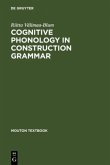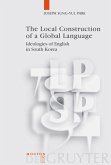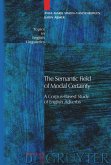Language users are creatures of habit with a tendency to re-use morphosyntactic material that they have produced or heard before. In other words, linguistic patterns and tokens, once used, persist in discourse. The present book is the first large-scale corpus analysis to explore the determinants of this persistence, drawing on regression analyses of a variety of functional, discourse-functional, cognitive, psycholinguistic, and external factors. The case studies investigated include the alternation between synthetic and analytic comparatives, between the s-genitive and the of-genitive, between gerundial and infinitival complementation, particle placement, and future marker choice in a number of corpora sampling different spoken registers and geographical varieties of English.
Providing a probabilistic framework for examining the ways in which persistence - among several other internal and external factors - influences speakers' linguistic choices, the book departs from most writings in the field in that it seeks to bridge several research traditions. While it is concerned, in a classically variationist spirit, with internal and external determinants of grammatical variation in English, it also draws heavily on ideas and evidence developed by psycholinguists and discourse analysts. In seeking to construct a comprehensive model of how speakers make linguistic choices, the study ultimately contributes to a theory of how spoken language works.
The book is of interest to graduate students and researchers in variationist sociolinguistics, probabilistic linguistics, psycholinguistics, and computational linguistics.
Providing a probabilistic framework for examining the ways in which persistence - among several other internal and external factors - influences speakers' linguistic choices, the book departs from most writings in the field in that it seeks to bridge several research traditions. While it is concerned, in a classically variationist spirit, with internal and external determinants of grammatical variation in English, it also draws heavily on ideas and evidence developed by psycholinguists and discourse analysts. In seeking to construct a comprehensive model of how speakers make linguistic choices, the study ultimately contributes to a theory of how spoken language works.
The book is of interest to graduate students and researchers in variationist sociolinguistics, probabilistic linguistics, psycholinguistics, and computational linguistics.








